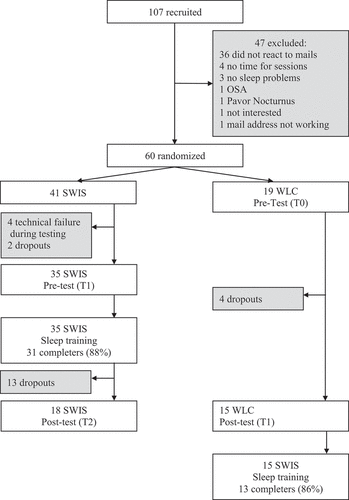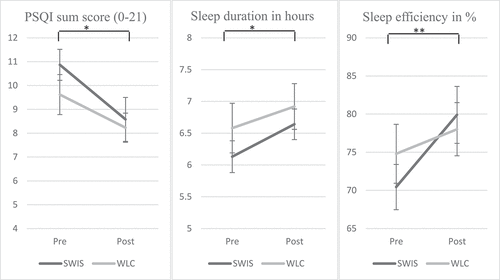Figures & data
Figure 1. Flow chart of the experimental design. After the waiting period, the WLC received the SWIS sleep training. All participants who completed at least four of the six sessions were counted as completers. Dropout rates aside from non-completers were 41% in the SWIS condition and 21% in the WLC condition.

Table 1. Self-reported sleep qualit y at pre- and post-measurement according to PSQI scoring when not indicated otherwise
Figure 2. Development of PSQI sum score, sleep duration and sleep efficiency in SWIS and WLC. Error bars for the standard error of the mean are displayed.Note: * p < .05; ** p < .01

Table 2. Summary of objective attention. Note. z = standardized z-value; T = standardized T-value, TAP = “test of attentional performance“
Table 3. Summary of memory and working memory in both conditions before and after treatment. Note. z = standardized z-value; T = standardized T-Value, VLMT = verbal learning and memory test, D1 = first round of learning
Data availability statement
The data that support the findings of this study are available from the corresponding author, MC, upon reasonable request.
